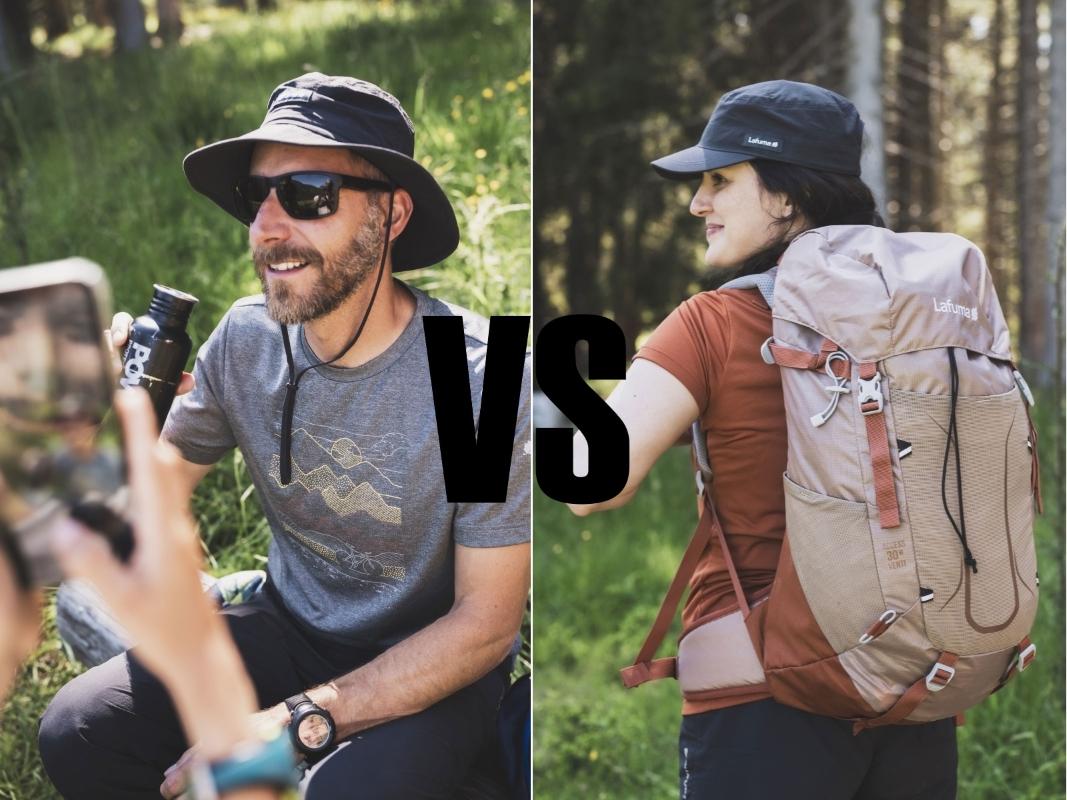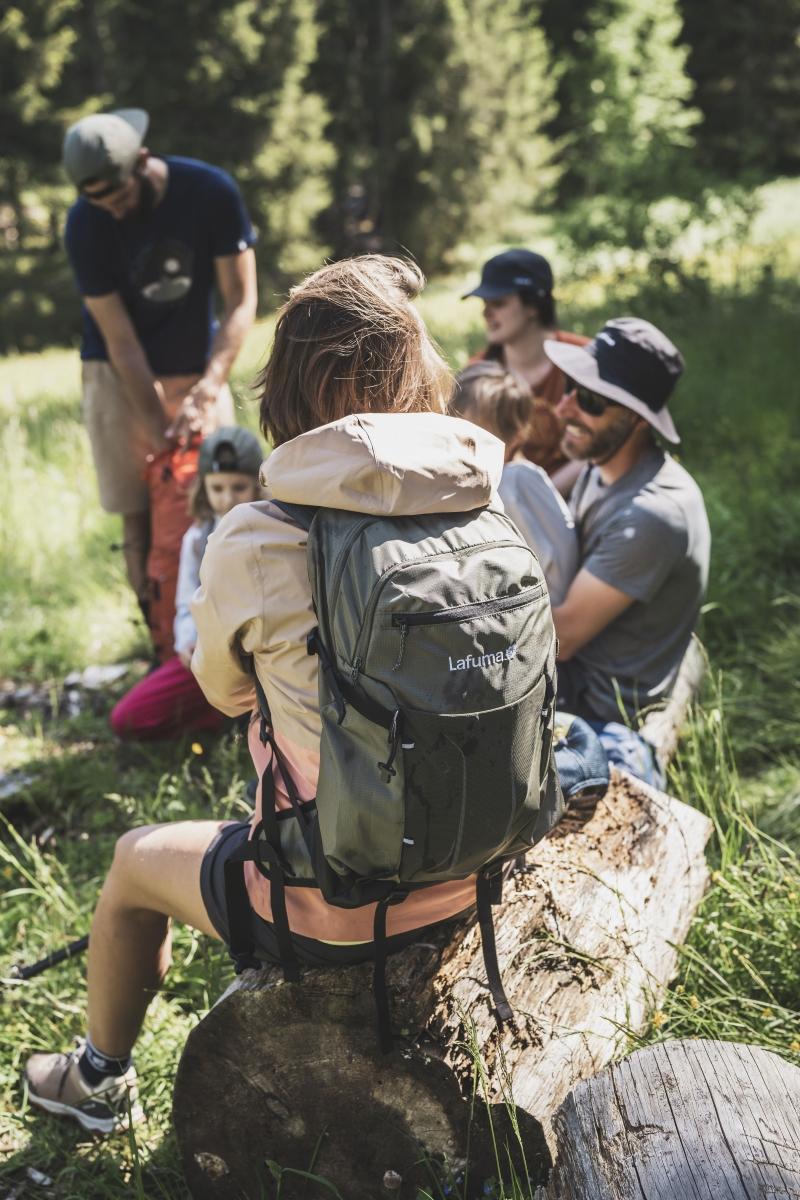When heading out into the great outdoors, protecting your head is essential. Between a hat and a cap, it’s not always easy to know which type of headwear is best suited for your hikes. Whether you’re walking under a blazing summer sun or at high altitude, many wonder which hiking hat is the most suitable. Should you go for a lightweight, sporty hiking cap, or opt for a wide-brimmed hat for maximum protection? In this article, we provide you with clear and professional guidance to help you choose the best head protection for your hikes. You’ll find an overview of the different types of hiking hats (caps, bucket hats, trekking hats, etc.), their respective advantages depending on the conditions (intense sun, strong winds, light rain), and tips to help you make the right choice.

Hiking Caps for Men and Women: Benefits and Uses
The hiking cap is a classic on the trails, appreciated for its simplicity and practicality. This type of headwear features a brim at the front and a crown that covers the top of the head. Among the must-have accessories for summer hikers, the hiking cap ranks highly thanks to its many advantages:
- Lightweight and comfortable: a hiking cap is usually very light and quickly forgotten once worn. Its shape fits the head well and stays securely in place, even in moderate gusts of wind. Most models are adjustable at the back (using a strap or Velcro), ensuring a snug fit and preventing it from blowing away.
- Face and eye protection: the rigid brim of the cap effectively shields the forehead and eyes from the sun, acting like a sunshade. In strong sunlight, it helps reduce glare and improves visibility of the terrain. Some hiking caps even feature UV-protective fabric to filter out part of the harmful rays.
- Breathability: designed for active use, many hiking caps are made from technical fabrics (polyester, nylon) that dry quickly and wick away sweat. Mesh panels can enhance ventilation and help keep your head cool during intense activity. In hot weather, you can even dampen your cap for a cooling effect on the scalp.
- Practicality and compact size: a cap is easy to store in a bag or pocket when not worn. It can be folded without losing its shape and springs back immediately. Its small footprint makes it a handy accessory to take anywhere.
Drawbacks to consider:
However, the cap does come with some limitations. Unlike a wide-brimmed hat, it does not protect the ears or the back of the neck from the sun. You’ll therefore need to apply sunscreen to those areas or wear a neck tube to avoid sunburn. Similarly, in steady rain, the cap offers less coverage than a hat: its thin fabric can quickly become soaked unless it is water-repellent, though some caps are designed with windproof and water-repellent membranes. In very cold or windy mountain conditions, you may feel the need for more comprehensive head protection.
You’ll find a wide range of hiking caps available at Glisshop, suitable for mountain trekking: technical, breathable models in a variety of colours and styles to suit every taste.
Hiking Hats: Complete Head Protection for Men and Women
The hiking hat stands out thanks to its brimmed design that goes all the way around the head. This type of headwear offers full protection from the sun, covering not only the face, but also the ears and the back of the neck with its all-round brim. It’s the preferred choice for many hikers and trekkers seeking maximum sun protection, especially during long walks in open plains, moderate altitude terrain or desert-like conditions where the sun is particularly harsh. A well-chosen trekking hat quickly becomes an essential ally for protecting your skin and avoiding heatstroke.
Advantages of a hiking hat:
- 360° sun protection: thanks to its wide brim, a hiking hat creates shade all around the head. It not only protects the eyes and forehead like a cap, but also shields the tops of the ears, the neck, and even part of the shoulders depending on the brim width. This is a real asset when hiking under intense sun, helping you avoid sunburn on the back of your neck.
- Versatility against the elements: beyond sun protection, the hiking hat also helps with other elements. In light rain or drizzle, a wide-brimmed waterproof hat prevents rain from dripping directly onto your face and neck (of course, in heavy storms you’ll need a poncho or hooded jacket!). Similarly, some models made from thick canvas provide light wind resistance at high altitudes, while being less warm than a beanie. If you’re walking through wooded areas with insects, a hat can also hold a mosquito net more easily than a cap, protecting your face from bites.
- Comfort and breathability: manufacturers have come a long way, and the traditional thick canvas hat has evolved. Today, you can find very lightweight hiking hats made from breathable synthetic materials, often with UV protection too. Ventilation eyelets or mesh panels improve airflow. The loose shape of the hat also allows air to circulate more freely, helping reduce sweating compared to a cap that sits snugly on the scalp.
- Adventurer style and visibility: wearing a trekking hat instantly gives you an explorer’s look! Beyond style, choosing a light colour (like beige or light khaki) helps reflect the sun’s rays and keep your head cool. On the other hand, brighter colours can increase your visibility on the trail — useful for being spotted from afar by your hiking companions or in case of emergency. Once again, there’s a wide range of models, whether unisex or gender-specific, available in various fabrics and colours.
Drawbacks to consider:
A hiking hat is slightly bulkier than a cap. You can’t always fold it or stuff it into a small pocket without damaging it (unless it’s a soft, rollable design). So, it’s often better to attach it to your backpack when not in use. Also, a wide-brimmed hat can be more susceptible to wind: without a fastening system, it may blow off in strong gusts. Fortunately, many trekking hats come with a drawcord or adjustable strap that can be tightened under the chin or behind the head to keep it secure. It’s worth using in exposed areas. Finally, although a hat offers excellent sun protection, it doesn’t entirely prevent you from feeling the heat at midday in summer — so remember to take breaks in the shade and stay hydrated, no matter what headwear you choose.
At Glisshop, the outdoor sports specialist, you’ll find a wide selection of hiking hats for men and women, suited to all needs.
Hiking Bucket Hat for Men and Women: The Compact and Stylish Choice
The hiking bucket hat – or trekking bucket hat – has made a strong comeback on the trails in recent years. This small, round hat with short brim, once associated with fishermen or 90s fashion, has become both a practical and trendy choice for hiking. Its popularity stems from several key advantages:
- Ultra-compact and lightweight: the bucket hat is even easier to fold and pack than a wide-brimmed hat. You can roll it up or squash it into a corner of your bag, and it will spring back into shape without issue. Its light weight makes it a discreet companion you can pull out as soon as the sun appears.
- Decent protection for the top of the head and partial coverage for the face: with its all-round brim, the bucket hat casts a modest circle of shade. Admittedly, its brim is much shorter than a full sun hat’s, so it offers less coverage for the eyes, neck and ears. However, compared to a cap, it provides slightly better overall head coverage (including the back). It’s a good compromise for hikes with moderate or occasional sun exposure (such as woodland paths or variable weather).
- Stays put in windy conditions: thanks to its low wind resistance, a bucket hat generally stays in place quite well. In moderate gusts, it’s less likely to blow away than a large, floppy hat. Its snug fit around the head also provides a reassuring hold in breezy weather. That said, in strong gusts, a bucket hat can still fly off if you’re not careful! As with other hats, many bucket hats come with a drawcord to help secure them.
- Relaxed style: wearing a hiking bucket hat gives off a cool, laid-back vibe. Colours and patterns vary widely depending on the brand – from camo prints for a rugged look, to plain understated tones, or bold colours to add a fun twist to your outfit. This type of headwear suits both men and women, though some collections specifically label certain items as men’s hiking bucket hats (usually to indicate a larger fit or masculine tones). In reality, anyone can wear the bucket hat they like, regardless of gender.
Which Hat Offers the Best Sun Protection?
Wondering which hat provides the best sun protection while hiking? Generally, the wider the brim, the better the protection against UV rays. A trekking hat effectively covers the face, ears, and neck, significantly reducing the risk of sunburn or heatstroke – particularly in mountainous or exposed terrain. That said, a desert-style cap with a neck flap can also be a good lightweight and protective alternative. In any case, opt for models with UV protection rating (UPF 50+) and light colours to reflect heat. For extended sun exposure, it’s best to choose a wide-brimmed hat or a cap with a flap.
Which Hat Is Best in Windy Conditions?
In the mountains, wind can make choosing headwear more challenging. In strong gusts, a well-fitted hiking cap is often the most stable option, thanks to its low wind resistance. The bucket hat, with its short brim, is also a good middle ground. If you still prefer a wide-brimmed hat, be sure to choose a model with a chin strap or drawcord to stop it blowing away. Some hats even allow you to fold up one side to reduce wind resistance. In short, in windy conditions, go for a cap or a hat that fastens securely to stay protected.

Cap or Hat? What to Choose for Hiking or Trekking
Cap or hat? It’s a common question among hikers when gearing up to face the sun and the elements. These two types of headwear aren’t necessarily rivals: each has its own strengths, and the choice ultimately depends on your needs and personal preferences. To help you decide, here’s a summary of the key advantages of each:
| Type of Headwear | Advantages | Limitations |
|---|---|---|
| Hiking Cap |
|
|
| Hiking Hat |
|
|
Hiking Clothing Guide
Choose your outfit based on the type of hike
Selecting the right garments for a summer hike
Tips to know what to wear to go hiking this summer
Why Wear a Technical T-Shirt for Hiking?
Everything You Need to Know About the Benefits of a Technical T-Shirt
How to Choose Your Hiking Jacket.
All the information you need to help you pick the right hiking jacket for your needs.
